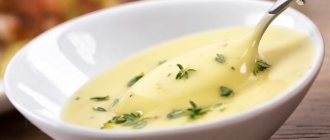Meat dishes are very popular among various peoples around the world. Common in our region are beef, pork and chicken. But today they also note a fairly high consumption of lamb. Lamb has a specific aroma and taste that cannot be confused with any other type of meat. This type of meat is the main component of Oriental cuisine. The benefits of lamb are not known to everyone. Just like the harm of this product. The fat tail, the fatty layer of lamb, deserves special attention. Therefore, before giving preference to this type of meat, it is worth understanding these issues in more detail.
healthy composition of lamb
All the benefits and harms of any product lie in its composition. It is worth noting that lamb is a dietary meat. Therefore, the product can be included in the diet for various problems with the gastrointestinal tract. Lamb is a major source of vitamin B12, which is not found in many other foods. Other vitamins in this group include the following: B1, B6, B3, B2, B4, B5, B9.
The benefit of meat also lies in the fact that sheep eat exclusively high-quality plant foods. The animal's diet consists only of fresh hay, grass and grain. Therefore, culinary experts confidently note that lamb has the purest meat. This is especially true for young lambs. Such plant foods allow you to saturate the human body with all the necessary vitamins, minerals and trace elements.
Vitamin D, which is found only in animal fats, deserves attention. Fat tail is famous for this component. Its deficiency leads to the development of rickets in children. In adulthood, vitamin D deficiency causes heart disease. In addition, lamb also boasts the following elements:
- Vitamins A, E, K;
- Iron;
- Manganese;
- Zinc;
- Potassium;
- Calcium;
- Magnesium;
- Sodium;
- Phosphorus.
It is worth noting that the composition of this meat is rich in various amino acids. These components improve the functioning of all body systems. There is a lot of lecithin in lamb, which normalizes cholesterol levels in the blood. Animal protein plays an important role for normal life. The protein contained in lamb helps strengthen the muscle corset, as well as the human skeletal system.
Valuable properties of lamb
When buying pork, consumers often focus on the affordable price, without thinking about the benefits. This meat has a wide range of irreplaceable qualities:
- Contains B vitamins, which normalize the functioning of the nervous and cardiovascular systems, have a beneficial effect on the condition of the skin and intestinal function, and strengthen the immune system.
- A source of many microelements (sulfur, chlorine, phosphorus, magnesium, calcium, sodium, potassium, iodine, iron, chromium, fluorine, nickel) that ensure our vital activities.
- Eating lean parts helps lower blood cholesterol levels.
- Selenium and vitamin E help rejuvenate the body due to their antioxidant properties.
- It is famous for its large amount of protein, improves metabolism, acts as a foundation for cell construction, and is involved in energy balance.
- When consumed regularly, it reduces blood pressure due to the content of unsaturated fats in meat,
- Conjugated linolenic acid helps prevent cardiovascular diseases, cancer, and helps reduce weight.
Not only meat, but also lard has a beneficial effect on the human body. It contains arachidonic acid, which belongs to Omega-6. It is involved in lipid metabolism and is responsible for the production of healthy cholesterol.
Arachidonic acid takes part in the production of hormones responsible for a good mood. Reasonable consumption of lard helps reduce “bad” cholesterol and improves your emotional state.
Some people ignore the consumption of lamb and sheep meat because of the characteristic smell. But there are exceptional properties of lamb that compensate for this disadvantage:
- The high fluoride content in meat helps strengthen and protect tooth enamel.
- A sufficient amount of iron prevents the risk of anemia and helps increase hemoglobin, the most important component of blood that transports oxygen to cells.
- The iodine contained in the product helps normalize the functioning of the thyroid gland.
- Lecithin has a positive effect on the functioning of the pancreas, which reduces the risk of diabetes and also normalizes cholesterol levels.
- The high zinc content helps fight high blood sugar and stimulates the immune system.
- Vitamins E, D, K help strengthen the skeleton and improve the functioning of the circulatory system.
- A small amount of cholesterol in meat prevents the occurrence of arterial disease - atherosclerosis.
In Central Asia and the Caucasus, lamb fat is famous for its healing properties. It contains: selenium, beta-carotene, vitamins A, E, B1, animal wax - lanolin, sterol, fatty acids.
It is used to treat colds, upper respiratory tract diseases, and varicose veins. Increases brain activity, improves joint mobility, and helps wound healing.
Fat tail (deposit at the tail of fat-tailed sheep) is used in the treatment of female infertility and dystrophy. It is used in cosmetology to improve the condition of hair, nails and skin rejuvenation.
What are the benefits of lamb?
First of all, it is important to mention that there is very little harmful fat in lamb. And fat tail, oddly enough, has a fairly low calorie content. By preparing this product correctly, the load on the stomach will be minimal. Regular consumption of lamb dishes improves all functions of the pancreas. Therefore, all doctors recommend using them to prevent the development of diabetes. This is especially true for those who are predisposed to this disease.
It is known that the meat of this animal contains a huge amount of iron. The diet for anemia includes the consumption of this particular product. Also, iron and B vitamins have a beneficial effect on the functioning of the central nervous system. You won’t even notice how you will become more resistant to many stressful situations, insomnia and depression will disappear. The immune system as a whole is strengthened.
The level of bad cholesterol is reduced. This is the only type of meat that contains virtually no cholesterol of its own. Therefore, lamb is recommended for patients with atherosclerosis. Representatives of both traditional and folk medicine note the medicinal properties of such a part of lamb as fat tail. Taking fat tail inside allows you to protect the body from viral and colds. Kurdyuk is an excellent preventative against colds.
Lamb fat is also used to treat colds in infants. Moms advise lubricating your feet, palms, chest and back with fat tail. The procedure should be done before bedtime, after which the baby should be wrapped in a warm blanket. Sometimes the fat is mixed with warm milk. Lamb contains fluoride. This allows the use of sheep meat in the treatment of caries. By consuming lamb, teeth are nourished with calcium from the inside, which helps avoid many diseases associated with teeth.
The effect of lamb on men's health deserves special attention. Zinc promotes the production of the male hormone testosterone. This has a positive effect on male potency. The number of active sperm increases, which is very important for the period of conception. The functions of the central nervous system in men are improved. There is a high probability of avoiding various diseases of the cardiovascular system.
Medicinal properties of lamb
This meat is used not only for cooking, but also for medicinal purposes. For colds, a compress of lamb fat or drinking hot milk with it added at night helps a lot. This product is also effective for treating colds in infants. They lubricate the palms, feet and chest with it at night, and wrap the child warmly. By morning, as a rule, the disease subsides. Lamb has a positive effect on the functioning of the pancreas and reduces abdominal pain. The fluoride it contains is indispensable in the treatment of caries. The effect of lamb on the male body is also important. Thanks to zinc, men produce testosterone, which has a positive effect on the nervous system - it helps to withstand stress. In addition, this meat improves potency. Therefore, the benefits of lamb for men are undeniable.
A person who eats meat at least once a week does not experience an increase in blood cholesterol. The functioning of the heart also depends on the condition of a person’s blood vessels. Normal blood circulation ensures trouble-free functioning of any organ. This is the meaning and value of lamb.
Possible harm of lamb
Despite the fact that lamb is very beneficial for the human body, some harm from this meat may also occur. Harm from excessive consumption of sheep meat is observed in the form of obesity and sclerosis. It is not recommended to eat lamb for elderly people or those with a disease such as arthritis. This is explained by the fact that lamb is capable of accumulating harmful bacteria on human bones, which only intensify the manifestations of the disease.
The main disadvantage of lamb, which is harmful, is considered to be the high lipid content in the meat. A large number of lipids have a detrimental effect on the condition of the walls of blood vessels. To avoid this, meat must be completely free of fat before consumption. And when cooking, you should not use additional fat (margarine, butter). You can just add a little olive oil. Side dishes of vegetables, in combination with this type of meat, will help protect the vessels.
There are a number of diseases for which lamb is prohibited. These include:
- Gastritis;
- Liver diseases;
- Kidney failure;
- Gallbladder dysfunction;
- Diseases of the biliary tract.
Mutton is the meat of sheep, rams. The most valuable meat is the meat of young (up to 18 months) castrated rams or sheep that are unsuitable for breeding.
The meat of well-fed sheep, no older than 3 years, is also tasty. It is distinguished by a light red hue, the fat is elastic and white. The meat of old or poorly fed sheep has a dark red tint and yellow fat. This meat is stringy, and therefore it is best consumed in the form of minced meat.. Favorite meat of the peoples of the East
The advantage of this type of meat is that lamb fat contains 2.5 times less cholesterol than beef fat and 4 times less cholesterol than pork fat.
Calorie content of lamb
The calorie content of boiled lamb is 291 kcal per 100 g. In 100 g of stewed lamb there are 268 kcal, and the calorie content of fried lamb is 320 kcal per 100 g. This product is characterized by a fairly high content of proteins and fats and can lead to obesity if consumed in large quantities .
Nutritional value per 100 grams:
Beneficial properties of lamb
Lamb is well suited for feeding the elderly and children. It contains a lot of fluoride, which protects teeth from caries. Lamb fat is low in cholesterol. Moreover, lecithin contained in lamb helps prevent diabetes by stimulating the pancreas, and also has anti-sclerotic properties and normalizes cholesterol metabolism.
The taste and nutritional value of lamb is exceptionally high. In terms of protein content, essential amino acids and minerals, it is not inferior to beef, and even exceeds it in calorie content (beef - 1838 kcal/kg, lamb - 2256 kcal/kg). Also because its fat contains a relatively small amount of cholesterol. Some scientists believe that atherosclerosis is less common among peoples who eat mainly lamb.
But you still need to take a break from meat, which is why all major religions of the world provide for fasting. After fasting, when the body has rested from eating meat, we become calmer and smarter. True, it is impossible to completely give up meat food, since our nutrition must be complete and balanced.
Meat broths will benefit people suffering from gastritis with low acidity. But they will have to be completely excluded for those who have a stomach ulcer or gastritis with high acidity. Meat also has an adverse effect on diseased kidneys. After all, any meat contains a lot of toxic substances; in addition, animals are fed antibiotics and hormonal stimulants, and these substances are very destructive to the kidneys and liver.
Burnt lamb meat is useful against the bite of snakes, black and yellow scorpions. With wine it helps against a mad dog bite
Dangerous properties of lamb
Lamb has the same set of harmful properties as other types of meat. Its consumption in large quantities can lead to the development of obesity and sclerosis. Elderly people and those who suffer from arthritis should not get carried away with lamb. The reason for this restriction is the bacteria that is found on the bones of meat, due to which arthritis can begin to progress.
Also, one of the main disadvantages of lamb is the high content of lipids, which are dangerous and contribute to the development of diseases of the cardiovascular system. In addition, lamb meat is not recommended for people who have problems with the liver, kidneys, gall bladder,
Contains lamb. Its benefits and harm to the body usually fade into the background, giving way to the gastronomic characteristics of the product. Nutritionists urge you to pay attention to the rules for choosing lamb, the features of its preliminary and culinary processing. If you learn to cook lamb dishes according to all the rules, they will bring noticeable benefits, improving and strengthening your health.
Harmful properties of lamb
However, every product, in addition to useful ones, unfortunately also contains substances harmful to the body. Lamb is no exception. Its benefits and harms depend on how correctly the meat is prepared and consumed. There are diseases for which eating lamb is contraindicated. These are gastritis, diseases of the liver, gall bladder, kidneys, and stomach. If a person has high acidity, then when eating meat it will become even higher. As a result, the mucous membrane and walls of the stomach will be corroded.
Protein foods increase the secretion of gastric juice. A high protein content in meat (if overeated) threatens a person with obesity and causes allergies. Indulging in dishes made from lamb meat leads to the accumulation of cholesterol. It has been found that bones may harbor bacteria that cause progressive arthritis. It is undesirable for children and the elderly to consume lamb. Low iodine content in it can lead to disruption of the thyroid gland. It is especially harmful to eat lamb liver, despite the fact that it contains vitamin A. In addition to it, uric acid is present in the liver. And it is very dangerous for gout, kidney stones and gall bladder.
Nutrients in lamb
Mutton is meat obtained from a sheep, ram or lamb slaughtered in a special way. The product has a specific texture, taste and aroma that not everyone will like. The best meat is considered to be that obtained from lambs under the age of 2 years, which were fed according to a special diet. The texture of such meat is soft and tender, the specific smell and taste are practically absent.
Advice Although lamb does not lose its benefits after freezing, it becomes tougher. If possible, it is better to purchase chilled meat and cook it for several hours.
Experts explain the benefits and harms of lamb by its special composition. It, in turn, depends on the correct raising of animals. Individuals that are kept in good conditions and eat only plant foods become a source of clean and dietary meat. As for the beneficial substances in its composition, the following chemical compounds deserve special attention:
- B vitamins. Lamb even contains vitamin B12, which is rarely found in food. This complex of ingredients is responsible for improving the functioning of various systems and organs.
- Vitamin D. Its presence is necessary for the prevention of rickets and osteoporosis, stabilization of heart function. There is especially a lot of vitamin D in.
- Vitamins A, E, K. Responsible for eye health, clean and youthful skin, and normalize blood composition.
- Minerals. Lamb contains many useful micro- and macroelements, but fluorine is the most valuable. It is responsible for strong bones and healthy teeth. According to scientists, people who constantly have lamb meat in their diet are much less likely to suffer from caries.
- Amino acids. Participants and catalysts of biological processes that support the functioning of systems and organs at the proper level.
Finally, lamb is a source of animal protein. It is well absorbed by the body, helping to strengthen the muscle corset and bone tissue. To preserve the maximum amount of necessary substances in the product, it is better to avoid frying. Boiled, stewed and baked meat is much tastier and healthier.
It's a matter of age. And not only
The age of the animal is an important factor that can directly affect the taste and texture of the meat and how tender it will be.
Lamb is the meat of domestic sheep that is less than a year old. This meat has little fat and can vary in color from soft pink to pale red. Lamb has a very delicate and soft taste of young meat. Meat from lambs under 3 months of age is also isolated separately. They are called milk or spring lambs. Lamb meat is considered a delicacy in many regions, which is why it has a higher price compared to lamb.
Lamb is the meat of domestic sheep aged from 1 to 3 years. The meat has an intense red color, contains a significant amount of fat and is quite dense in consistency. The meat has a bright, rich taste, which has many admirers. It is often said that you have to try lamb before you get used to its taste. Lamb, as a rule, is more popular with people who love game - the meat of deer, wild boar, rabbit, duck and other more exotic animals.
Also, the taste of meat is affected not only by age, but also by the fattening of lambs and rams. Dairy lambs feed on their mother's milk for up to 3 months, hence their name. Sheep milk is an excellent food. It is almost twice as high in calories as cow's milk and one and a half times richer in proteins. Therefore, the meat is especially tender. Next, the lambs are transferred to grain or grass-fed, which gradually affects the taste of the meat.
Farms in New Zealand and Australia remain the best in the production of mutton and lamb. All due to the excellent natural conditions in which the animals are fed. This is mainly grass-fed, thanks to which sheep meat from New Zealand and Australia is considered the most environmentally friendly. If you choose a good manufacturer, the taste will definitely not disappoint you.
Benefits of lamb for the body
With high nutritional value, lamb is low in harmful fat. In combination with the activity of biologically active substances, this has a positive effect on the body:
- Blood composition improves. It removes toxins and cholesterol, increases the number of red blood cells, and normalizes hemoglobin levels. Lamb is not contraindicated even with atherosclerosis, when almost all other types of meat are prohibited.
- Lamb fiber stimulates the production of gastric juice, improves pancreas function and reduces the risk of developing diabetes. If there are abnormalities in the functioning of the digestive tract, you should avoid rather heavy lamb broths, limiting yourself only to meat.
- By adding fat tail to lamb dishes, you can increase the body's resistance to colds and infectious diseases.
- Lamb contains a lot of zinc, which has a beneficial effect on men's health. This chemical element reduces the risk of developing prostatitis in men and increases potency.
Lamb liver can be no less useful than meat. It is recommended to stew or steam it. The resulting product perfectly satisfies hunger and is a source of energy. This dietary dish will help you lose excess weight and correct your silhouette; you just need to avoid frying or baking it.
What are the benefits of lamb meat?
The main advantage of this product is its high nutritional value - lamb is superior to other types of meat in this parameter, so it is necessary for those recovering from an illness, as well as pregnant women and athletes. In addition, as mentioned above, it contains many vitamins and microelements, thanks to which nutritionists were able to determine the benefits of lamb meat for the body:
- regulates the production of gastric juice;
- provides prevention of diabetes mellitus;
- improves the chemical composition of the blood, stimulates the process of hematopoiesis;
- replenishes iron deficiency no worse than beef;
- increases hemoglobin levels;
- normalizes metabolic processes;
- stabilizes blood pressure;
- improves mental activity;
- helps accelerate fat burning (thanks to linoleic acid);
- has a beneficial effect on the condition of teeth, reducing the risk of caries.
The specific benefits of lamb for men are also interesting - with regular consumption, it reduces the likelihood of problems with potency. To a greater extent, this effect is due to the high content of vitamin K. However, its fat content is still lower than the fat content of pork, and the cholesterol level is also significantly lower, so lamb can be considered a relatively dietary product.
Separately, doctors mention the benefits and harms of lamb broth: if it is not too rich, made with 2 waters and not from old meat, it will have a beneficial effect on the gastric mucosa, therefore it is indicated for gastritis, as well as for low acidity. True, such a dish can be difficult for the liver if you overdo it with its strength.
Harm of lamb and contraindications to its consumption
Despite all its obvious benefits, lamb can harm the body. Even the meat of dairy lambs is considered quite heavy food, so it should not be abused. Otherwise, it will be slowly digested, saturating the tissues not only with useful substances, but also with toxins. Nutritious lamb dishes quickly make you feel full, so it’s enough to limit yourself to a few pieces of meat rather than a whole plate.
A contraindication to eating lamb in any quantity is arthritis and other age-related joint problems. It is believed that the product can become a source of bacteria that accumulate on the bones and intensify the manifestations of the disease. Older people should avoid this type of meat altogether. Their body may not be able to cope with fats, which are otherwise beneficial for tissues and blood vessels.
There are several other conditions under which lamb liver and meat cannot be included in the diet:
- gastritis during exacerbation;
- kidney and liver diseases;
- decreased functionality of the gallbladder and bile ducts;
- age up to 3 years.
As with all other products, when consuming lamb you need to be attentive to your body’s reaction. If negative changes in your condition occur, you should stop eating meat or reconsider the method of processing it, switching to a more gentle one.
Lamb, according to many people, is fatty meat containing large amounts of cholesterol. But this product occupies the first place in the menu of residents of Asia and the East, from which delicious dishes are prepared and used almost every day.
In reality, there is not much harm from lamb, the main thing is to know how to choose it and cook it correctly.
Is it true that lamb meat is harmful to health?
“I know that the best kebabs are made from lamb, but they say that this meat is unhealthy. This is true?"
Evgeniya, Borisovsky district.
— The advantages of lamb are its high nutritional value and unforgettable taste. It is an environmentally friendly product because the sheep eat only grain, hay and grass. In our country, lamb is somewhat ignored: many do not buy it because they do not know how to choose and prepare meat correctly, as well as what is valuable in it. But in Asian countries and the Caucasus, lamb is highly valued, and deservedly so. For the preparation of first and second courses, mainly the pulp of young sheep and lambs is used. It is tender, juicy, but less heavy and high in calories than pork or beef. If you are prejudiced against lamb because you were once treated to a tough, fatty roast with an unpleasant odor, then you are simply out of luck - it was the meat of an old lamb, which is better not to use for food at all.
Lamb: health benefits
This type of meat is equally beneficial for women and men, which is explained by its balanced composition.
This includes:
vitamins (B, PP, E, K, D), microelements (calcium, potassium, phosphorus, sodium), proteins, fats. They help the body in the fight against various diseases.
On a note
!
If lamb is of the first category, then there are 209 kcal per 100 g.
If the meat is of the second category, then 100 g corresponds to 166 kcal. At the same time, a product with a lower calorie content is more saturated with nutrients than higher-calorie meat. Due to its beneficial properties, lamb has a beneficial effect on humans.
1. Helps improve well-being. The content of B vitamins improves the functioning of the digestive system, the synthesis of nutrients, and also increases body tone and immunity. The product restores blood circulation and strengthens bones. All this is due to the content of vitamins E, K, D.
2. Helps restore the functioning of the nervous system. Frequent use of the product stops the development of diseases associated with the heart and blood vessels. The functioning of the central nervous system is improved thanks to B vitamins.
3. Helps the formation of the baby's nerve cells in the womb. This is facilitated by the presence of folic acid in meat.
4. Helps resist colds. The beneficial properties of lamb also have a positive effect on the children's body. Using animal fat, infusions and compresses are prepared. They are necessary in the treatment of colds in children. Often the animal's fat is rubbed on the child's body, then covered with a blanket.
5. Helps with weight loss. Within 24 hours you are allowed to eat 100 g of low-calorie meat of the second category.
On a note
!
It has been scientifically proven that there is not as much cholesterol in lamb as people think.
It is much less than in beef and pork. Along with this, lamb meat also has very little fat compared to pork. Therefore, lamb is recommended for diabetics and obese people. 6. Helps stop tooth decay. Frequent consumption of sheep meat will keep a person's teeth healthy. This is due to the high percentage of fluoride it contains. Teeth enamel will be strong due to the calcium content.
7. Helps restore the functioning of the gastrointestinal tract, thanks to lecithin, which is part of lamb meat. For people with gastritis and ulcers, broths cooked with lamb meat are recommended.
8. Helps increase hemoglobin as the product is rich in iron. It is often consumed to prevent anemia.
Thus, the benefits of lamb are obvious. But do not forget about contraindications, as well as the possible harm of such meat.
Selecting lamb based on external characteristics
Lamb refers to the meat of young lambs and lambs slaughtered at the age of one month. Meat is usually divided into categories. These are young lambs 1-2 months old, rams 3-12 months old and older animals.
To prepare a tasty dish, they take lamb meat, since it is more tender, nutritious, and has a pleasant taste. In order not to make a mistake with your choice, you need to take into account some factors when purchasing.
Lamb meat is classified as a low-fat variety. And this despite the fact that young lamb has more fat than adult lamb. But this fat is very tender and juicy. The meat of adult sheep differs from young sheep in that the amount of protein in it corresponds to the amount of protein in pork.
On a note
! If possible, choose a carcass of the Kalmyk breed. These animals are given special care, as a result of which they do not have a special smell, and there are more vitamins and minerals than in the meat of an adult sheep.
You need to choose lamb for your benefit according to the following criteria.
1. The meat will not be tough and have an unpleasant odor if you give preference to a one-year-old lamb. The absence of fat on the carcass indicates that the buyer is being offered goat meat.
2. Lamb should have delicate light fat and a pink tint, evenly distributed over the entire surface.
3. You should check the freshness of the product by pressing it with your finger. If there is no dent left, then the meat is fresh.
4. The surface of the piece should be shiny and free of smudges.
5. You need to pay attention to the bones. In a young lamb they are pink, and the ribs are thin, located at a small distance from each other. An adult animal has larger and whiter bones.
6. To make sure that the piece on the market is not tinted, it is worth checking it with a dampened napkin. If you apply it to meat and a red mark remains on it, then this is a chemically processed specimen.
7. The piece must have a mark. This is confirmation that the carcass has passed inspection.
The above criteria will help the consumer choose fresh, juicy lamb meat.
The benefits and harms of lamb meat
Sheep are considered one of the most unpretentious pets for breeding; they grow quickly. Today, more than a dozen varieties of sheep for meat production are known. Why is lamb meat so attractive, besides getting it quickly, what are the benefits and harms of eating it?
To answer this question, you need to look at the product in principle. Lamb meat is a product that differs in nutritional properties depending on the age of the individual. The meat of lamb and young lamb (2-6 months old) is highly valued. Then comes the product obtained from an animal up to a year old. A one-year-old lamb is already beginning to grow fat, so its meat is not as tender as that of lamb. Young lamb is considered a dietary meat product, as it contains little fat. In contrast, lamb contains a large amount of vitamins and minerals, as well as easily digestible proteins.
If you compare a piece of excellent lamb with the same piece of pork, then the body will undoubtedly receive more benefits from the lamb. Since it contains 30% more iron, which is very important in the prevention of anemia; very little cholesterol.
Choosing lamb for a specific cooking method
Lamb meat can be fried, boiled, stewed, and also used as minced meat for cutlets, meatballs, and used to prepare pilaf and kharcho. The question is which part of the carcass is suitable for a particular method.
1. If you need meat for cooking, then buy the neck, brisket or shoulder.
2. To prepare pilaf or stew you will need a shoulder blade or brisket.
3. If the carcass is needed for frying, then preference is given to the back leg.
4. For roasts, it is worth purchasing a neck or kidney part, and the back leg is also recommended.
5. To prepare cutlets or meatballs, you should take a spatula, the neck part.
6. The back leg or kidney part is suitable for baking.
7. To prepare the stew you will need the hind leg, shoulder blade of the animal.
Not only the pleasant taste of food and the absence of an unpleasant odor, but also its benefits for the body depend on the correct choice of lamb.
The harm and benefits of lamb are directly related to its choice, preparation, and consumption.
It is important to remember that the product should not be given fried to small children and the elderly.
It is also necessary to take into account the contraindications of lamb, according to which it can be completely excluded from the diet or used with great caution.
Kira Stoletova
Among the meat products on store shelves, you can most often find pork, beef and poultry. Lamb is a less popular product. What is this connected with?
People often hear statements that lamb has an unpleasant odor and a specific taste. But professional chefs from different countries, especially eastern ones, do not agree with this. The main thing is to know which part of the lamb should be used for a particular dish. The age of the animal also makes sense.
Is it worth buying or not?
The benefits and harms of lamb meat to the body always cause controversy among lovers and opponents of this product. The fact is that the fats it contains are several times greater in quantity than beef and even pork, but they belong to the saturated group and therefore, in certain amounts, are completely safe and even beneficial for the body.
Numerous studies have shown that buying beef is still worth it. This meat product is very healthy for humans and can sometimes even help in the fight against excess weight. The use of lamb for these purposes is characterized not by a small amount of calories, but by the trans fat CLA contained in the composition. Not all trans fats are harmful to the body and CLA is a good example of this.
Those who believe that lamb is harmful to the body should correct their opinion. Fats and fatty acids contained in meat are harmful only in large quantities. Scientists are confident that when this product is consumed up to 350 g per day for men and up to 270 g for women, there is no and will not be a harmful effect. The usefulness of lamb meat is many times greater than the harm that is typical for all varieties of red meat from pork to beef.
Beneficial features
The benefits of lamb for the human body are due to the presence of various vitamins, minerals and other substances. Meat contains B vitamins, which are necessary for muscle tissue, and they also improve the functioning of the nervous system. Lamb contains choline, which reduces cholesterol levels in the blood and is involved in fat and carbohydrate metabolism. This meat contains potassium in large quantities, which has a positive effect on the functioning of the cardiovascular system. It also contains magnesium, which is necessary for the heart muscle. Thanks to the presence of phosphorus and calcium, the process of regeneration and strengthening of bone tissue is activated. Lamb also contains phosphorus, which is responsible for water balance.
The calorie content of lamb is at an average level, so you can eat meat in small quantities without fear for your figure. Lamb meat contains several times less fat than other types of meat. In boiled form, it is recommended to include it in the diet. What is important is that the amount of cholesterol in lamb is at a fairly low level.
Meat contains lecithin, which activates the activity of the pancreas.
With regular use, the risk of developing atherosclerosis is reduced.
Broths prepared with lamb are recommended for use by people with low acidity gastritis. For them, such a meat broth will be very useful.
Nursing mothers are not prohibited from consuming lamb during breastfeeding. With a reasonable approach, such meat will only benefit the body. Lamb should be introduced into a nursing diet no earlier than the baby turns 4 months old. In addition, you need to eat it very little, especially at the beginning. In this case, it is necessary to carefully monitor changes in the baby's reaction to breast milk. In general, it is recommended to eat no more than 300 grams of lamb per week.
Composition of the product
The benefits of lamb are characterized by its composition and nutritional value. The fact is that it is an irreplaceable source of vitamin B12. This vitamin provides 108% of the daily value when consuming 100 g of meat. Only beef liver and seafood are more beneficial for the body in terms of quantity, so lamb is often included in the diet of expectant mothers, as well as patients with gastrointestinal pathologies.
Also, the beneficial properties of lamb are determined by other beneficial substances contained in it:
- selenium;
- neacin (B vitamin);
- iron;
- magnesium;
- zinc;
- calcium.
You should also eat lamb because it is a source of vitamin K. Among meat products, only veal is healthier in terms of the content of these elements. Its beneficial properties are characterized by the normalization of blood pressure, the digestive tract, and mental activity. Research shows that there are benefits for men as well, since it is this enzyme that affects the reproductive system.
The benefits of lamb also come for muscles when you include this product in your diet. Lamb and veal are the best food for athletes. The fact is that lamb meat is rich in creatine (a substance responsible for human energy potential), glutathione and taurine. The latter are among the best antioxidants.
You should not take the first lamb you come across from the counter. You should know which part is used for certain culinary purposes:
- If you plan to prepare broth, the shoulder and neck parts are best suited to the rest. Some chefs advise preparing broth from brisket.
- For fried lamb, the most delicious and tender is the back leg.
- For preparing boiled meat - neck, kidney and front leg.
- The cutlet part of the lamb is the neck and shoulder blades.
- For baking - the hind leg and the kidney part.
The most useful products are those purchased from trusted suppliers. This is also important when choosing the right meat products. The fact is that the taste of dishes depends on what and how the lamb ate during its life. On large farms, the basic rules of animal husbandry are often neglected, so it is better to work hard and find one, but conscientious seller.
You can get the maximum benefit from the product only by making the right choice. This is the reason why you should take the advice of culinary experts.
A person’s sense of smell will help with the choice. If a piece of pulp does not have an unpleasant odor, this is what you need.
According to culinary specialists, the most useful type of lamb is lamb. If a young lamb has been fed only its mother's milk, its flesh will be soft, tender and very tasty. The age of the animal can also be determined. The meat of a young lamb has a pink tint, while the meat of an old one is bright red.
Help with illnesses
You can find out from doctors whether lamb is good for the body. According to them, meat dishes from this product are included in the daily and weekly diets of patients with diabetes. This disease is characterized by impaired insulin production, and the enzymes contained in meat normalize this process.
For diseases of the gastrointestinal tract, many gastroenterologists do not recommend including lamb in the menu. For gastritis, as well as low acidity, only broths are allowed. You should also eat them carefully, having first checked with your doctor about the permissible amount.
Lamb is also used in the preparation of diets for patients with diseases of the cardiovascular system. But the properties of this product have both beneficial and negative effects. With such a pathology as anemia, lamb is an indispensable product, since it contains a large amount of iron. Due to the lipids it contains, lamb consumption should be limited.
Fighting excess weight
What else is lamb useful for, besides helping in the fight against various pathologies? It turns out that lamb meat is used as a product to combat obesity. CLA (the scientific name for linoleic acid) helps speed up fat burning. No less beneficial properties for people losing weight are:
- low calorie content;
- high content of vitamins;
- lecithin (normalizes metabolism).
The beneficial properties of this product are also characterized by a low amount of fat compared to other types of red meat. The most significant component is cholesterol. Lamb contains 3 times less of it than pork, so anyone who wants to say goodbye to extra pounds should include meat dishes in their daily diet.
To make the benefits of using the product even greater, you need to pay attention to its preparation. Most of it has to do with preparing the marinade. The concentration of harmful carcinogenic substances depends on its quality.
Calorie content of lamb
The older the individual, the fattier and tougher the meat. This applies not only to lamb, but also to the meat of other domestic animals. Depending on where the piece of carcass comes from, the energy value of the product also varies. Note that there is more protein in lamb than fat in the complete absence of carbohydrates. The calorie content of lamb compared to other products of animal origin is low:
- first category meat – 203-209 kcal;
- meat of the second category – 165 kcal;
- lamb – 135 kcal.










